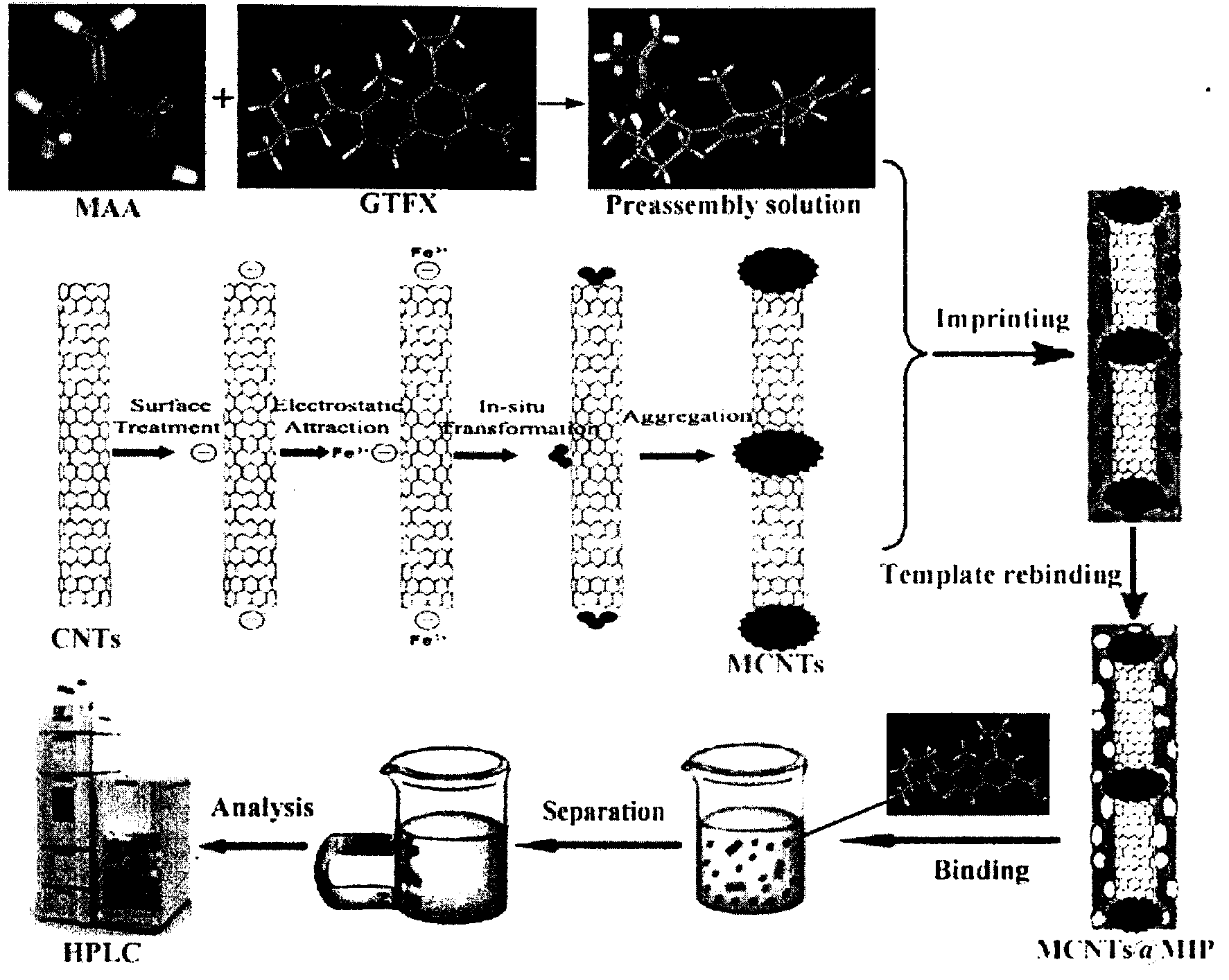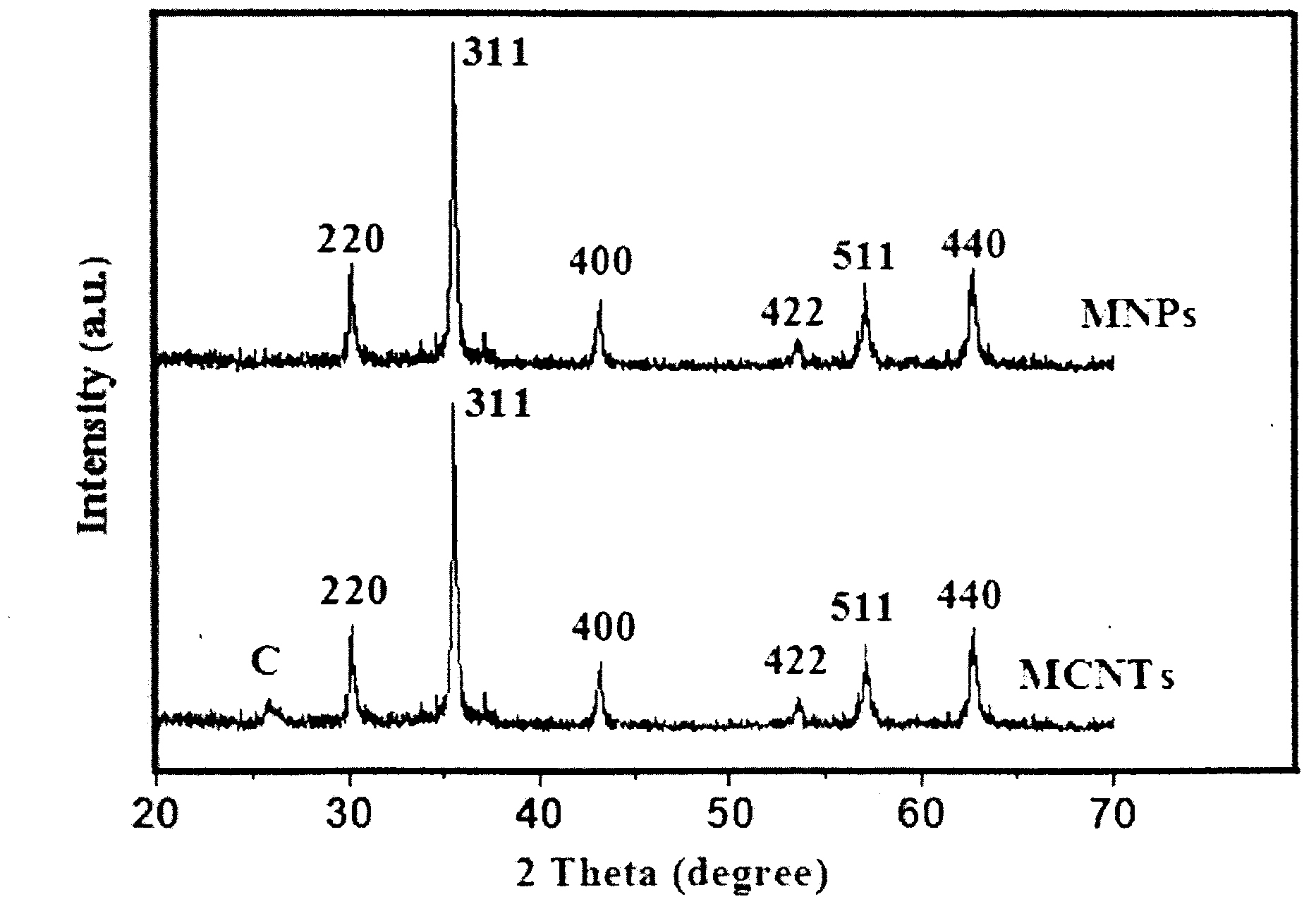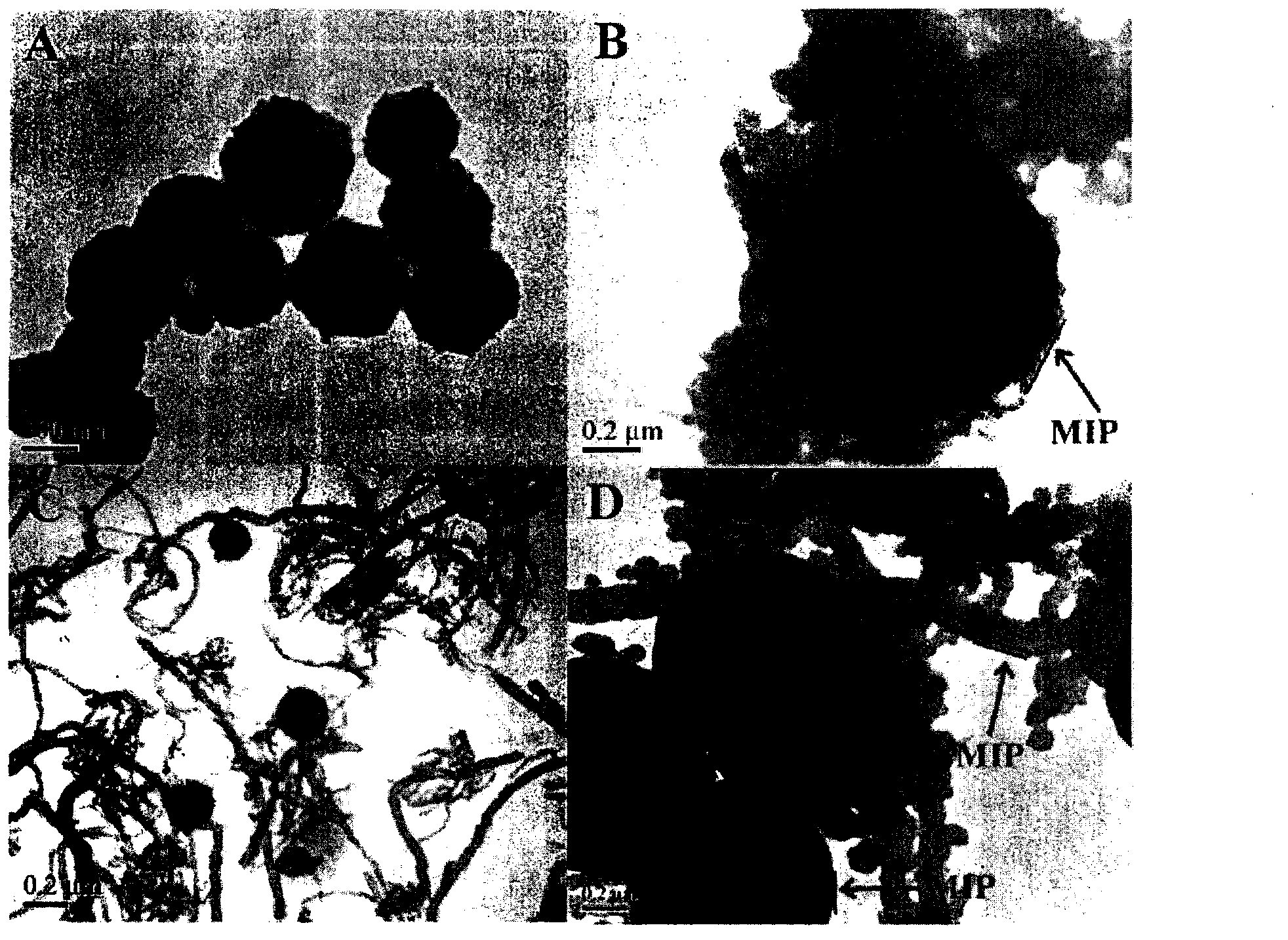Preparation method of magnetic carbon nanotube surface molecular imprinting material
A magnetic carbon nanotube, surface molecular imprinting technology, applied in chemical instruments and methods, alkali metal oxides/hydroxides, inorganic chemistry, etc., can solve problems such as difficulty in meeting detection requirements, low selectivity, and complicated operations.
- Summary
- Abstract
- Description
- Claims
- Application Information
AI Technical Summary
Problems solved by technology
Method used
Image
Examples
Embodiment 1
[0028] Add 0.5 g of multi-walled carbon nanotubes to 160 ml of concentrated HNO with a volume ratio of 1:3 3 - Concentrated H 2 SO 4 In the mixed solution, ultrasonically reacted for 6 hours, filtered under reduced pressure, washed repeatedly with distilled water until neutral, dried in vacuum at 60°C to constant weight, and set aside;
[0029] Add 0.4g of the above-prepared carboxylated carbon nanotubes, 2.4g of ferric chloride, 3.4g of sodium acetate and 34g of sodium acrylate into a mixed solvent consisting of 33.75ml of ethylene glycol and 11.25ml of diethylene glycol, and sonicate for 1h to obtain The black mixed solution was transferred to a reaction kettle made of polytetrafluoroethylene, sealed, and placed in a muffle furnace to react for 10 hours. After the reaction was completed, it was cooled to room temperature, washed several times with methanol and water, and dried in vacuum at 60°C to constant weight, spare;
[0030] Add 1mmol of gatifloxacin and 4mmol of met...
Embodiment 2
[0034] Add 0.5 g of multi-walled carbon nanotubes to 160 ml of concentrated HNO with a volume ratio of 1:3 3 - Concentrated H 2 SO 4 In the mixed solution, ultrasonically reacted for 6 hours, filtered under reduced pressure, washed repeatedly with distilled water until neutral, dried in vacuum at 60°C to constant weight, and set aside;
[0035]Add 0.4g of the above-prepared carboxylated carbon nanotubes, 2.4g of ferric chloride, 3.4g of sodium acetate and 3.4g of sodium acrylate into a mixed solvent consisting of 33.75ml of ethylene glycol and 11.25ml of diethylene glycol, and sonicate for 1h Obtain a black mixed solution, transfer it to a polytetrafluoroethylene reaction kettle, seal it, and place it in a muffle furnace for 10 hours of reaction. After the reaction, cool to room temperature, wash it with methanol and water several times, and dry it in vacuum at 60°C. to constant weight, spare;
[0036] Add 1mmol of norfloxacin and 4mmol of methacrylic acid to 10ml of dimeth...
Embodiment 3
[0040] Add 0.5 g of multi-walled carbon nanotubes to 160 ml of concentrated HNO with a volume ratio of 1:3 3 - Concentrated H 2 SO 4 In the mixed solution, ultrasonically reacted for 6 hours, filtered under reduced pressure, washed repeatedly with distilled water until neutral, dried in vacuum at 60°C to constant weight, and set aside;
[0041] Add 0.4g of the above-prepared carboxylated carbon nanotubes, 2.4g of ferric chloride, 34g of sodium acetate and 3.4g of sodium acrylate into a mixed solvent consisting of 33.75ml of ethylene glycol and 11.25ml of diethylene glycol, and sonicate for 1h to obtain The black mixed solution was transferred to a reaction kettle made of polytetrafluoroethylene, sealed, and placed in a muffle furnace to react for 10 hours. After the reaction was completed, it was cooled to room temperature, washed several times with methanol and water, and dried in vacuum at 60°C to constant weight, spare;
[0042] Add 1mmol ofloxacin and 4mmol methacrylic ...
PUM
 Login to View More
Login to View More Abstract
Description
Claims
Application Information
 Login to View More
Login to View More - R&D
- Intellectual Property
- Life Sciences
- Materials
- Tech Scout
- Unparalleled Data Quality
- Higher Quality Content
- 60% Fewer Hallucinations
Browse by: Latest US Patents, China's latest patents, Technical Efficacy Thesaurus, Application Domain, Technology Topic, Popular Technical Reports.
© 2025 PatSnap. All rights reserved.Legal|Privacy policy|Modern Slavery Act Transparency Statement|Sitemap|About US| Contact US: help@patsnap.com



